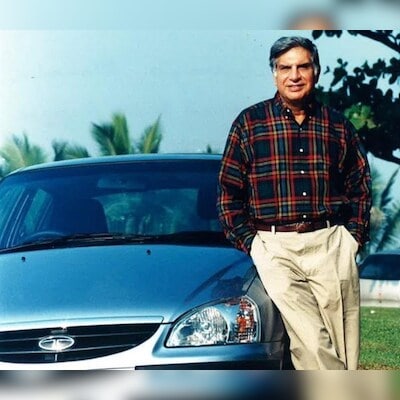)
Ratan Tata (Photo posted on Instagram by @ratantata)
Fate placed Ratan Tata in a situation where few expected him to succeed. However, not only did he succeed, but he also transformed the sprawling Tata Group from an India-focused entity into one of the world’s most significant names, from an old-world business into a modern conglomerate, where its software outfit became the crown jewel, and from a group that had parted with Air India into one that brought the airline back into its fold.
Equally important, Tata changed the character of the group from a federal setup to a cohesive operation, led by Tata Sons, the group holding company, which in turn is controlled by Tata Trusts.
It is no surprise that Tata’s journey as the helmsman of the Tata Group—beginning in 1991, the year India embraced economic reforms and liberalisation—ran in parallel to the country’s rise as an economic power and the unleashing of India’s managerial and technological talent across the globe.
However, the thread that connects the numerous dots in this story is Tata’s personal journey.
“It’s hard being a Tata. The surname doesn’t permit failure…” Gita Piramal wrote in Business Maharajas, first published in the 1990s.
Yet, that is exactly what the wise money was betting on when Tata took charge—that he would fail. He joined the group in 1962, armed with a bachelor’s degree in architecture from Cornell. He dabbled in various roles before starting a less-than-glorious stint at the National Radio and Electronics Company in 1971. Ten years later, he was named Chairman of Tata Industries, where he first showed glimpses of his talent by transforming the company into a strategic think tank and promoter of high-tech ventures.
However, few paid attention to Tata Industries at a time when legends like Russi Mody at Tata Steel, Darbari Seth at Tata Chemicals and Tata Tea, and Ajit Kerkar at Indian Hotels were loosely reporting to the bigger legend: JRD Tata.
Naturally, few expected Ratan Tata to go far when he became head of the group. He was not even supposed to become that. His chief rival for the position, Mody, gave a newspaper interview that ended his chances.
Mody’s eventual sacking made it clear that Ratan Tata would not adhere to JRD’s loose federal structure. Instead, he took on the tougher task of bringing the satraps to heel. From there, he systematically increased Tata Sons’ shareholding in group companies. In 1996, he launched the Brand Subscription Scheme, where group companies paid a fee for using the Tata name.
Once Tata felt secure, he pursued his dreams. Unlike some of his peers, such as Rahul Bajaj, who guarded their sovereignty and did not part with equity, Tata was open to collaborations with foreign partners. He took this a step further with a series of overseas acquisitions, most notably Tetley, Corus, and Jaguar Land Rover.
What he did at home was equally significant. He always dreamed of creating a people’s car for India, combining the comfort of the Ambassador with the frugality of a Maruti. Thus, the Indica was born and held its own against international brands for a while. However, the more ambitious Nano proved a challenge. Tata had promised an ideal car for India at around Rs 1 lakh, but despite fulfilling that promise, the Nano did not capture the imagination of India’s masses, who resisted being identified as owners of the cheapest car.
Then came the episode of the Radia tapes. Tata and Niira Radia became acquainted in the 1990s when the group was striving to launch an airline with Singapore International Airlines. Radia, who had moved to India with her three sons, was advising SIA. Following the leaked tapes, which showed Radia in questionable conversations, their association drew scrutiny, although Tata had repeatedly stated that Radia was brought in to counter negative campaigns against the group.
Despite this, when Tata handed over to Cyrus Mistry in 2012, it was clear he was leaving behind a glorious legacy. However, discontent with Mistry’s direction led to a boardroom battle in 2016, during which Tata returned as interim chairman before initiating a more lasting succession.
It has been an eventful journey for someone who was not supposed to be in the role. He may not even have been a Tata. His father, Naval, was adopted by Ratanji Tata, the son of group founder Jamsetji.
Ratan Tata could have remained an architect, but his grandmother’s illness brought him back to India frequently, and one thing led to another. He stayed, scripting an indelible chapter in Indian business history.
First Published: Oct 10 2024 | 1:05 AM IST
